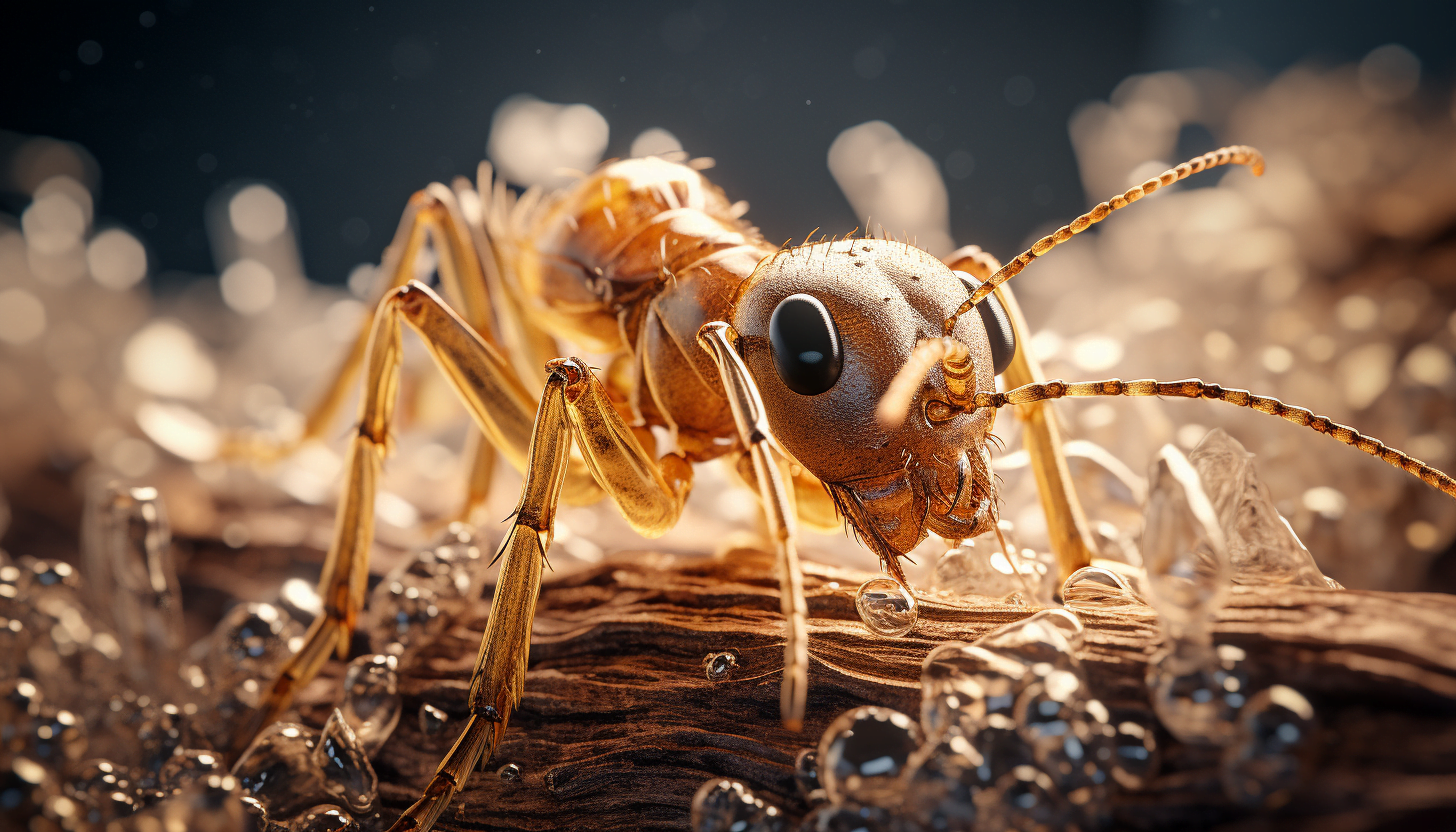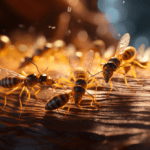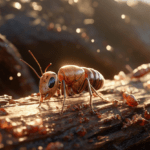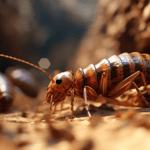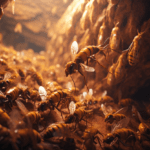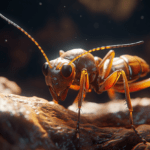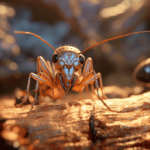When it comes to pests that can wreak havoc on your property, termites are often at the top of the list. These tiny insects have a voracious appetite for wood, but their diet goes beyond just timber. In this article, we will explore the fascinating world of termite diets, uncovering what they eat, why they eat wood, how much they consume, and much more. By understanding their feeding habits, we can better protect our homes and ensure the longevity of our wooden structures.
Note: Curious about more specifics on their preferences? Dive into our previous article on What is a Termite’s Favorite Food for a deeper understanding.
1. What Do Termites Eat?
Termites are primarily known for their affinity for wood. They have specialized enzymes in their digestive systems that allow them to break down cellulose, the main component of wood. Beyond cellulose, termites also consume other plant materials such as leaves, grass, and bark. In some cases, they may even feed on paper, cloth, or carpet, especially if these materials contain cellulose.
2. Why Do Termites Eat Wood?
Wood serves as a vital source of nutrition for termites. Unlike humans and other animals, termites cannot produce their own cellulase enzymes to break down cellulose. Instead, they rely on symbiotic bacteria and protozoa in their guts to aid in the digestion of cellulose. The cellulose-rich composition of wood provides termites with the necessary energy and nutrients for their survival and growth.
3. How Much Do Termites Eat?
Termites have an impressive appetite and can consume large amounts of wood. Depending on the colony size and termite species, a mature termite colony can eat anywhere from a few pounds to several pounds of wood per day. This steady consumption can lead to significant damage to wooden structures if left unchecked.
4. How Do Termites Eat Wood?
Termites have a unique ability to break down wood. They typically start by tunneling into the wood and creating a network of galleries where they live and forage for food. Once inside the wood, termites use their powerful jaws to chew through the cellulose fibers. They also utilize saliva, which contains enzymes that help in the digestion process. As the wood is consumed, termites continue to create new tunnels and chambers, expanding their colonies and causing structural damage.
5. What Do Termites Eat Besides Wood?
While wood is the primary component of a termite’s diet, termites are opportunistic feeders and will consume other plant materials if necessary. Termites have been known to feed on a variety of cellulose-rich materials, including leaves, grass, mulch, and even cardboard. This adaptability allows termites to survive and thrive in different environments.
6. What Type Of Wood Do Termites Eat?
Termites do not discriminate when it comes to the type of wood they consume. They can feed on both hardwood and softwood, although some species may have preferences. Common types of wood that termites often target include pine, cedar, redwood, and oak. It is important to note that termites can also damage processed wood products, such as plywood and particleboard.
7. Typical Feeding Habits of Termites
Termites have a well-organized social structure within their colonies, and their feeding habits reflect this organization. Worker termites, responsible for gathering food, will feed on cellulose-rich materials and bring it back to the colony to share with other members. Soldiers, with their strong jaws and defensive abilities, protect the colony from threats while also consuming cellulose. Lastly, the reproductive termites, known as swarmers, focus on establishing new colonies rather than foraging for food.
8. What Competes with Termites for Food?
Termites may be small, but they face competition from other organisms in their quest for food. For example, ants are fierce competitors and will often engage in territorial disputes with termites. Other wood-boring insects, such as beetles and carpenter ants, may also compete with termites for access to wooden resources. Understanding these competitive dynamics can help homeowners devise effective strategies for termite control and prevention.
The Fascinating World of Termites
[youtube v=”nTBy-QqcAFA”]
Termites, also known as silent destroyers, possess a unique and unsettling trait – they lick their queens to death. In this episode, we delve into the enigmatic world of termites, exploring how a termite queen can lay millions of eggs, the staggering damage they cause each year, and the reasons behind their cannibalistic behavior.
Termites, ancient creatures that have been around for approximately 130 million years, can be found on six of the seven continents, thriving in warm and damp environments. These social insects live in colonies ranging from a few hundred to millions. In 2018, a remarkable super complex consisting of 200 million excavated mounds, covering an area the size of Great Britain, was unearthed in Brazil. This raises the question of how termite colonies can reach such staggering sizes.
The queen of a termite colony plays a crucial role in its expansion. Once she mates, she retreats underground to embark on her lifelong job of incessantly laying eggs. Every day, for 15 years, she lays an astounding 30,000 eggs, which is equivalent to one egg every three seconds. To accommodate this prodigious egg-laying, she grows to a length of up to 11 centimeters. However, her large size and ceaseless egg production render her immobile, necessitating a team of worker termites to attend to her needs. Part of their caretaking duties involves licking her body to maintain her cleanliness – a whole new perspective on housekeeping.
As the queen approaches the end of her life, having laid approximately 250 million eggs and having endured continuous attention from the workers, a macabre process unfolds. The workers transition from cleansing to a more aggressive licking – not for cleanliness, but to devour the queen. While the precise reason behind this cannibalistic behavior remains unknown, it is believed that the workers engage in this act as a form of nutrient recycling. Termites colonies function as giant nutrient recycling machines, and it appears that consuming the queen’s body is part of this intricate process. The workers absorb the fluids and fats from her body, ensuring they do not go to waste.
Termites’ dietary preferences contribute to their reputation as destructive insects. Wood serves as their primary source of sustenance. These tiny creatures wreak havoc on wooden structures and vegetable matter, causing significant damage. Furthermore, introduced termite species tend to seek shelter in human-made structures, leading to even greater structural damage and mounting frustration for property owners. In the United States alone, termite damage accounts for a staggering five billion dollars annually.
The intriguing aspect about termites’ ability to digest wood lies in their unique gut microbiome. Termites possess specialized microbes in their digestive systems that assist in breaking down cellulose, which is the main component of wood and a complex carbohydrate. Astonishingly, termites do not inherit these microbes from birth; they acquire them from others within the colony. The transmission of these vital microbes occurs through a rather unappealing method known as anal feeding – termites consume the feces of other members. This peculiar practice ensures that the necessary microbes are passed on and the colony can continue to digest wood effectively.
Termites are undoubtedly fascinating creatures, with their ability to lay millions of eggs, their destructive tendencies, and their peculiar cannibalistic behavior. These silent destroyers, though often seen as nuisances, offer a glimpse into the intricate complexities of nature’s microcosms. From their relentless devotion to the queen to their remarkable digestive systems, termites provide a captivating look into the wonders of the natural world.
Conclusion
Termites, with their insatiable appetite for wood, can cause significant damage to properties if not properly managed. By knowing their diet preferences, we can take proactive measures to protect our homes from these destructive pests. From their reliance on cellulose to their adaptability to different food sources, termites are fascinating creatures that remind us of the importance of ongoing pest management.
FAQs
1. Are termites only attracted to wood?
Termites are primarily attracted to wood due to its high cellulose content. However, they can also feed on other cellulose-rich materials such as leaves, grass, and cardboard.
2. What are the signs of a termite infestation?
Signs of a termite infestation include mud tubes or tunnels on walls or foundations, discarded wings near windows or doors, hollow-sounding wood, and visible damage to wooden structures.
3. How can I prevent termites from infesting my home?
To prevent termite infestations, it is important to eliminate moisture sources, maintain proper ventilation, store firewood away from the house, and schedule regular termite inspections by professionals.
4. Can termites damage non-wood materials?
While termites primarily target wood, they can also cause damage to other cellulose-containing materials, such as paper, cloth, or carpet, especially if these materials are in direct contact with the soil.
5. Should I attempt DIY termite control?
Given the destructive potential of termites, it is highly recommended to seek professional help for effective termite control. DIY methods may provide temporary relief but may not address the root cause of the infestation.
- Unlock Elemental 2 Secrets: Actionable Insights Now - April 2, 2025
- Lot’s Wife’s Name: Unveiling the Mystery of Sodom’s Fall - April 2, 2025
- Photocell Sensors: A Complete Guide for Selection and Implementation - April 2, 2025
